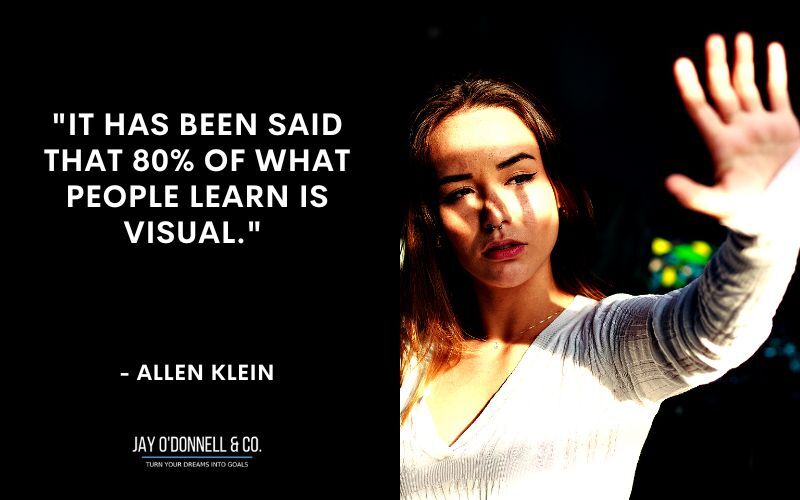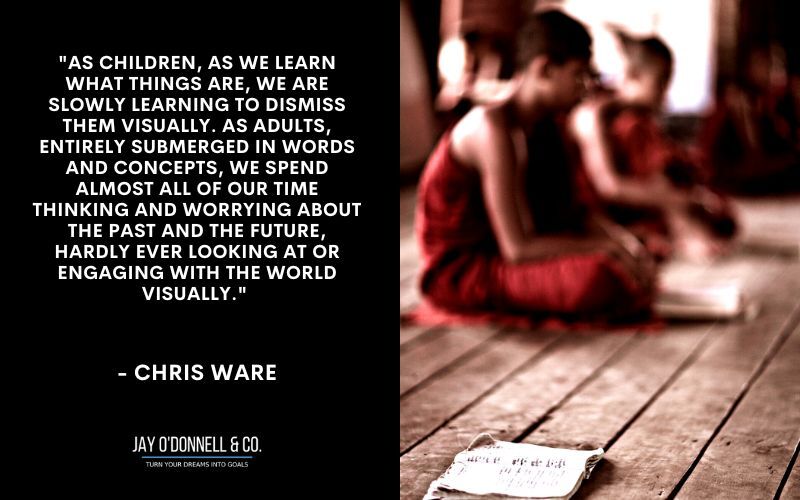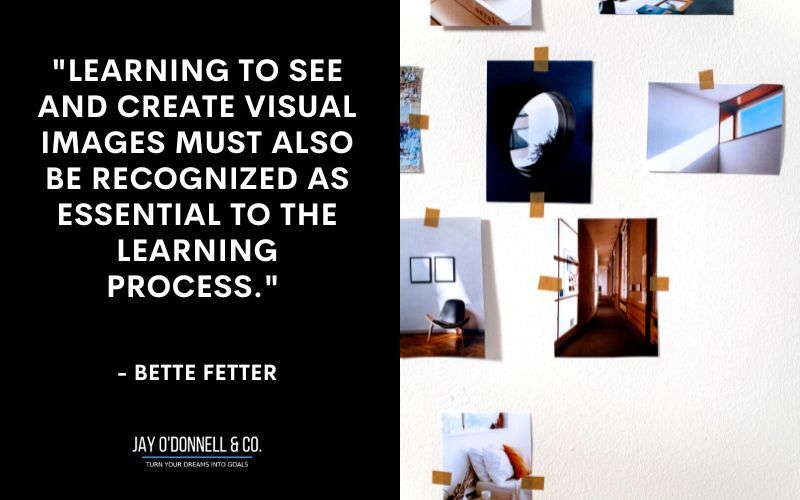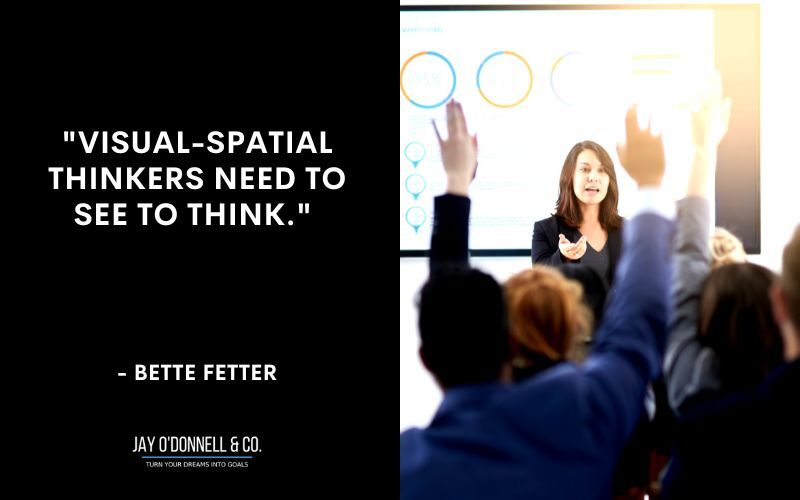What are the best goal-setting methods for visual learners?
When it comes to setting goals, it’s really important to find a method of goal setting that actually works for you.
I’ve often said that the specific method you choose to write down your goals is nowhere near as important as just finding some method that works for you and getting started on the process.
I’m a firm believer in the practice of dreaming big dreams, turning those dreams into goals, and writing those goals down to create a roadmap to success.
However, it’s also true that different learning styles often require slightly different approaches to this process.
If you’re a visual learner, you may need to find a goal-setting process that appeals to your specific range of learning ability traits.
One of the great things about humans is that they are all a little bit different.
So, if you can find a goal-setting method that works well with not only your personality but also with your unique and personal learning style, you’ll set yourself up for much greater odds of success in the long run.
Now, keep in mind that every person is going to be a little bit unique, and not every visual learner is going to learn exactly the same way, either.
However, in this blog post, I’m going to give you 5 tips that you can utilize as a visual learner to start setting more effective goals in a manner that’ll work better with your learning style.
With that being said, before we get into the tips, let’s first define what a visual learner is and then talk about the challenges associated with goal setting for visual learners.
Let’s jump into it.
What Is A Visual Learner?
Visual learners tend to learn by reading or seeing pictures. They tend to understand and retain information better when they can reference it in a visual form, as opposed to an auditory form.
They like to see what they’re learning and tend to thrive when shown pictures, graphs, images, and outlines of the subject matter.
Visual learners sometimes struggle with spoken directions.
They can also be very prone to getting distracted by other visual cues and/or sounds. They tend to be attracted to colors, visual layouts, and spoken words rich in descriptive imagery.
(Note: Are you an auditory learner? Check out our guide to goal-setting for auditory learners here: A Goal Setting Strategy For Auditory Learners.)
The Challenges Visual Learners Face When Setting Goals
Simply put, visual learners can struggle with goal setting in the sense that they can pretty easily get very distracted from it.
In a nutshell, goal-setting tactics that require you to just write down basic to-do lists and/or paragraphs to form plans for the future can quickly become boring; and they can start to feel ‘unnatural’ for the visual learner.
With that being said, the following 5 tips will generally help most visual learners to find a method for overcoming those difficulties.
5 Best Goal Setting Tips For Visual Learners
1. Keep Things Short And Punchy

As a visual learner, when you write down your goals, you’re probably going to have a better experience and stick with them for longer if you keep the goals short, punchy, and concise.
If you try to get overly wordy or verbose with your goal-setting practices, you’re likely to get overwhelmed, distracted, and/or bored with the process.
2. Use Beautiful Graphics

One tip that visual learners can use to really help them crank up the effectiveness of their goal-setting habit is to use beautiful goal-setting sheets, goal planners, and/or journal pages to really engage their imagination as they’re writing down their goals.
(Note: You can get some beautiful goal-setting sheets to get started with in my Goal Setting Essentials Starter Kit. You also get 2 free ebooks that’ll help you to get started with goal-setting – and it won’t cost you a penny.)
If you sit down with plain old ‘lined notebook paper,’ you’re going to struggle to stay focused as a visual learner while you’re writing out your goals.
Instead, you may want to invest in a goal planner, a bullet journal, or some other kind of analog goal-setting tool that will stimulate your visual senses and really engage your excitement and interest.
Personally, I’m a big fan of the Self Journal.
Bullet journals can be especially useful for this as well because they sometimes include decorated stationery-type paper that can really help to inspire extra creativity. For visual learners, this can be really useful for helping them to stay engaged.
3. Create A Vision Board

Creating a vision board and/or using images in your goal setting can be an especially powerful tip for visual learners.
The reason for this is pretty simple.
Since visual learners tend to absorb information better through a visual format, this type of goal-setting practice will tend to hold their attention longer and make it easier for them to invest time into structuring their goals and putting together a vision for the future.
Going along the same lines as this, it can also be useful to use images, graphics, drawings, photographs, etc., in your day-to-day goal-setting habits.
For example, if you have fitness goals that you want to write down in your bullet journal or notebook, it might be useful to print out a picture of the type of physique you’re hoping to achieve, cut it out, and either glue or tape it right into the bullet journal page next to the goal statement.
This helps to attach a visual cue along with the written goal. For visual learners, this is sometimes really important for helping them to stay focused and motivated about the goal.
4. Color Code Goals In Different Life Categories

One really interesting thing about visual learners is that they’re highly color sensitive.
For example, some people may not care at all if the color of the ink in their journal is slightly more gray or brownish. However, visual learners will instantly recognize the difference, and they’ll generally instantly know whether or not it makes the journal feel more creative or less creative.
With this being said, it can be especially useful to separate different goal categories via color-coding, either with the ink used to write down the goals or to mark goals in different categories with different color highlighters.
You could even make this more advanced by laying out your goals on a computer and using different colored ink and/or color augmentations to really make the different types of goals stand out from each other.
(You can do this very easily using a free program like Canva.)
For example, if you have weight loss goals, business goals, and meditation goals all listed in the same bullet journal, you can use a yellow highlighter for the fitness goals, a blue highlighter for the business goals, and then a pink highlighter for the meditation goals, etc.
This can really help the individual types of goals stand out to you as a visual learner, and keep you more interested in checking those items off your list.
5. Outline Your Future Life Plans

As you write your longer-term goals and build that long-term future vision for your life, you’ll probably tend to get better results as a visual learner if you outline these plans as opposed to starting off writing them in paragraph form.
Now, here’s the thing. There’s nothing wrong with writing out your future plans in paragraph form. In fact, at some point, it’s highly beneficial to do this. But, if you’re a fairly stringent visual learner, then you may get distracted, bored, and/or overwhelmed with this process if you just start out that way.
With that being said, writing out your future plans in a short, concise, punchy paragraph-esque style will probably facilitate you getting more work accomplished in writing your future goals than you would if you tried to write it all out as paragraphs to begin with.
You can always go back and fill in that outline with images, graphics, more descriptive text, etc.
How Do You Create A Visual Goal?
To create a visual goal, you want to start out by writing down the overall objective.
Then, you want to find a way to create a path to that objective using information that will engage your visual learning style with inspiring creative cues.
This is all part of that process of dreaming big, turning those dreams into goals, and then writing those goals down to create a roadmap to success.
You could do this with images, with big punchy words written in bright colors, with words that invoke emotion and/or specific feelings or plans, etc. It’s just really important for you to be able to visualize the goal, as well as the pathway towards the goal that’ll lead you to success.
As a visual learner, it’s in your best interest to do this by utilizing images, pictures, graphics, word pathways, and different methods for color-coding information so that you come up with a visual representation of what you’re trying to achieve and a concrete plan for how you’re going to get there.
Conclusion
There you have it.
5 tips to help you set and achieve goals more effectively as a visual learner.
Of course, at the end of the day, it all really comes down to a few simple steps.
Figure out what you want, turn your dreams into goals, write down those goals, and then review, revise, and keep going.
The most important thing to remember is that you can do this.
You’re likely far more talented than you give yourself credit for.
And you’ve got what it takes to create the life you want.
All you have to do is meet that vision with goals and a hard work ethic—and you’ll soon begin to see positive results.
Now get out there and make it happen.
You’ve got this. I believe in you.
Best wishes…
Jay O’Donnell
Quick Links
© 2024 All Rights Reserved.
